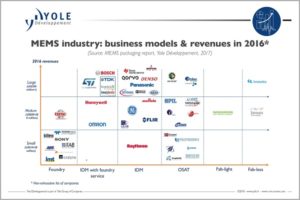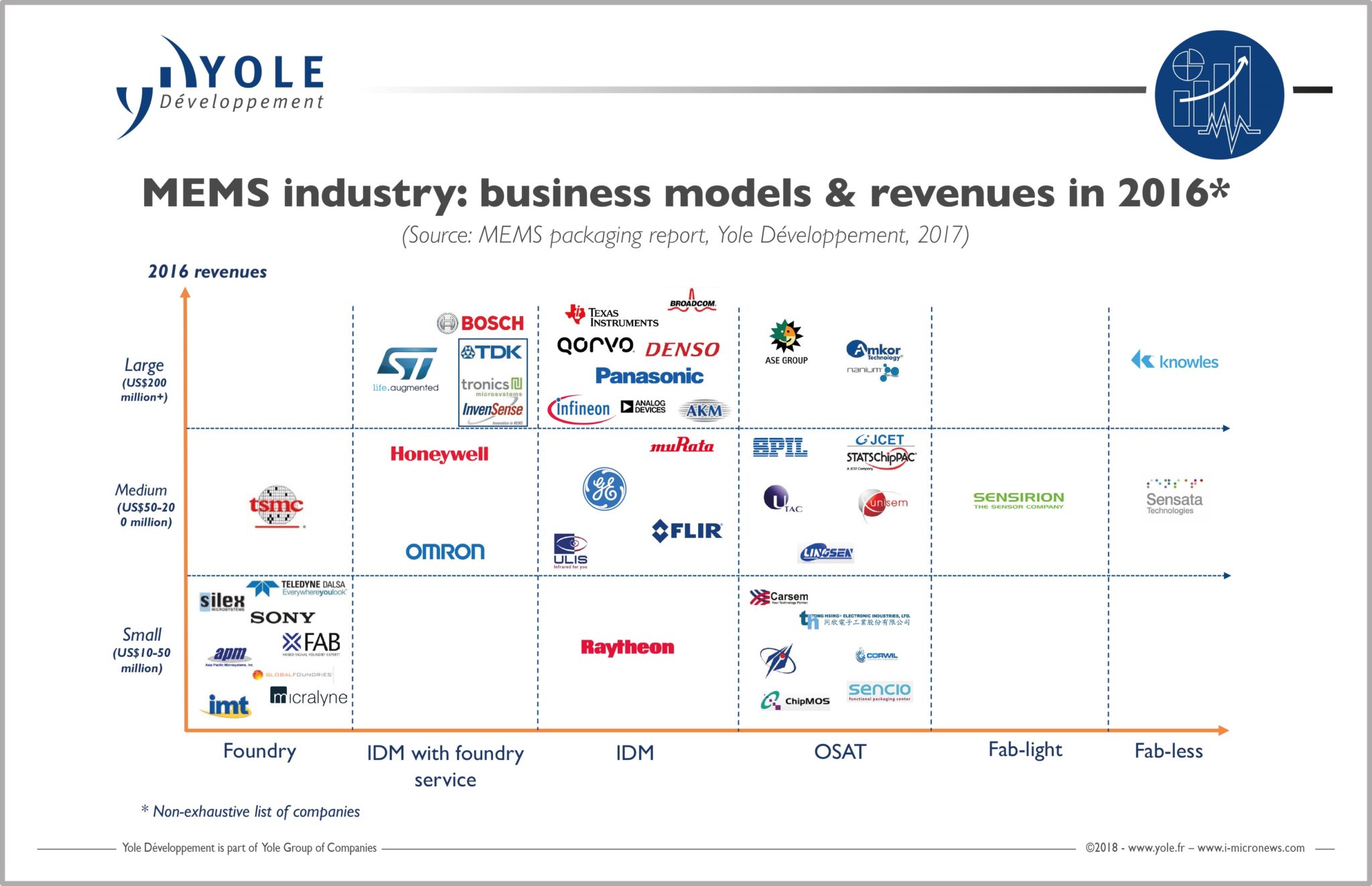
More than half of MEMS packaging today is done by OSATs and Yole Développement (Yole) estimates OSATs’ market share will continue to grow in the next five years. The MEMS volume augmentation, especially for RF applications, is making the MEMS business more and more attractive for OSATs, which have started to offer wider range of packaging solutions and tests, accordingly to automotive standards.
In the era of smart devices, sensing is essential as devices become substitutes for human beings. People are surrounded by sensors, relying on them for safety, entertainment, food production, transportation… Whether sensors are used in smartphones, in cars or in aircraft, there are two major challenges beyond their original function: integration and reliability.
MEMS technologies have enabled performant, miniaturized, cost-effective and reliable sensors, some of them withstanding high temperatures and harsh environments. The diversity of MEMS devices and the different technologies involved in their manufacture have led to a complex but sustainable supply chain from design to testing involving foundries, OSATs and MEMS vendors. The MEMS packaging business is organized around five main families: inertial MEMS, environmental MEMS, optical MEMS, acoustic MEMS and RF MEMS.
If the LGA package remains the most commonly used platform, the trend towards sensor fusion and the aggregation of several sensors in one device stresses the interest in using SiP and hybrid package platforms alike; like the recent launch from Invensense/TDK of a 7-axis sensor combining accelerometer, gyroscope and pressure sensor.

Originally MEMS devices were packaged and tested by IDMs or MEMS vendors; OSATs entered the MEMS packaging business and they have not stopped grasping market share since. Their next opportunity is MEMS testing, that has been retained by IDMs for confidentiality reasons and due to reliability issues for customers.
In some cases, it makes sense economically to perform packaging at OSATs’ facilities when logic and MEMS dies are sourced from several suppliers.
The market research and strategy consulting company Yole estimates that the MEMS packaging market will grow from a market value of US$2.56 billion in 2016 to US$6.46 billion in 2022 – a 16.7% CAGR over this period, including MEMS-based RF devices . This doubling of the market is a significant opportunity from which OSATs will benefit the most, based on Yole estimates. In an recent @Micronews interview, Alan Evans, MEMS Business Development/Technical Program Manager at Unisem Group – a Malaysian OSAT which according to Yole ranks at #6 in the MEMS packaging business – explained that the standardization of some MEMS packages fosters the outsourcing to IDMs or OSATs as the volume of dies packaged at OSATs, leveraged by their different customers, enables better cost-competitive packaging solutions.
The question remains whether the same trend will be followed in MEMS testing, as tests can represent between 30-90% of final component price depending on the end application. Some OSATs are targeting this as a new business opportunity, like Amkor Technology which has recently announced its testing capabilities, including MEMS testing.
To read the complete story: MEMS packaging & testing: the next opportunity for OSATs?

















